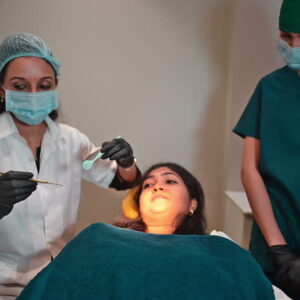The advancement in the technology and manufacturing process in the dental industry has undergone a dramatic shift. In the dental field, there is a widespread computer-aided design or computer manufacturing (CAD/CAM) used for the fabrication of indirect dental restorations.
The use of cad cam in prosthodontics has become the more common technology which is mostly seen in dental practices and laboratories. The reason for using technology in the dental field is that the restorations made by the digital field will provide accurate fit and thereby reduce production costs and time.
What is a CAD/CAM block?
The cad cam block was first introduced in 1985 and it is made of ceramic, then time followed the different types of software and hardware, and finally using the 3D design program, the CAD/CAM block can be fabricated into different types of restorations.
Now, in the dental laboratory, the CAD/CAM block holds a special place, and apart from ceramic, it can be also made using different types of materials. The main reason for using the CAD/CAM block is to provide highly accurate fit restoration, quality esthetics, and durability.
It will reduce production time and cost, so most dental laboratories have started preferring the CAD/CAM blocks. It can be made using different types of materials like ceramic, lithium silicate, zirconia, resin, waxes, and many more to come.
Material uses for CAD/CAM process:
Dental titanium block is one of the most common materials used for making the CAD/CAM block as the material comes with high biocompatibility and known hygienic characteristics. In the CAD/CAM restoration, the titanium block will create a strong and corrosion-resistant base so it will come for a longer time.

CAD/CAM dental titanium block provides excellent metallic properties, and its low thermal conductivity will enhance the physical properties. The strength and esthetic are most important for any kind of CAD/CAM block and here in titanium, it offers amazing esthetic work. Also, the strength of the block is high as it resists toughness and breakage resistance under the stress.
Dental peek block is nothing but a high-performance thermoplastic polymer, and it offers a high strength-to-weight ratio. One of the advantages of the peek block is that it offers high corrosion resistance so it can be used as a selective material that can replace metal.

Even many studies have proven that using the dental peek block, the removable and fixed dental prosthesis can be made easily. In addition, this dental block is mainly recommended for occlusal splints, implant abutments, customized healing abutments, and provisional restorations. This is considered a well-established dental material, and it offers a long performance.
Dental cad cam wax is mainly used in the dental field to manufacture the wax that scaffolds dental implants with plastic-covered crowns using the CAD/CAM system. One of the features of dental wax that benefitted the dental industry is the high-contrast color of the wax.

The dental wax is made in the form of a wax disk, and further, it will undergo the process of a lost wax process where the dental material will be cast into the denture restorations. Even it can make into dental frameworks that can be used for crown and bridge models. This type of dental wax has a low coefficient of thermal expansion.
Dental PMMA blocks used in the processing of CAD/CAM blocks will undergo the manufacturing process that takes place at high pressure and temperature. The reason behind this, at high temperatures and pressure, the block will undergo polymerization; decrease the free monomers and porosity, and finally results in enhancing the mechanical properties.

In the dental field, the CAD CAM PMMA block has mainly been used for the processing of dental crowns, bridges, inlays, and implants. This block can be used as an alternative for metal-free removable applications.
Among the other zirconia blocks, the pre-shaded zirconia blocks (+multilayer zirconia) are mostly used as it offers highly esthetic restoration along with permanent strength and stability. This type of block is used in the manufacturing of crowns and bridges, and it is considered the best material for CAD/CAM blocks.

The process of the CAD/CAM block can also be done by using cad cam ceramic blocks, which are mainly used for final or temporary restorations. The ceramic blocks will have high flexural strength, offers good optical properties, and offers several levels of shades and translucency.
There are a variety of materials available for CAD/CAM blocks, and depending on the restoration placement and type, the material can be chosen. Whatever material you choose either ceramic or resin, the material should come under the protocol requirements. One of the very main criteria is that the material should have enough thickness so that it can be processed further.
So, here are a few things to consider if you are choosing the material for CAD/CAM block;
The dental cad cam is one of the best technologies incorporated in the dental industry, as it makes the restoration process fast and reliable. But the success of the CAD/CAM process entirely depends on the material selection, restoration design, cementation, and occlusion.





